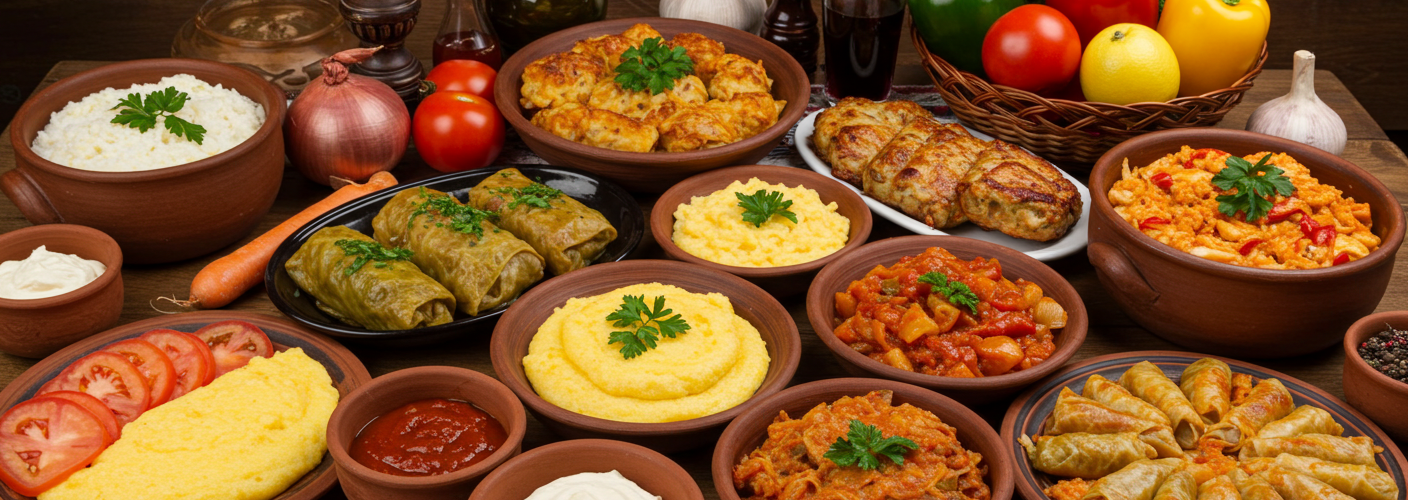Moldova, a small yet vibrant nation nestled between Romania and Ukraine, boasts a culinary scene that reflects its rich history and diverse cultural influences. As you delve into Moldova food, you will discover an array of flavors, traditions, and dishes that speak to the heart of its people and their way of life.
Traditional Ingredients
At the core of Moldovan cuisine is a reliance on fresh, locally sourced ingredients. The fertile land of Moldova is perfect for cultivating a variety of crops, which is why vegetables like potatoes, cabbage, and beets figure prominently in many dishes. Additionally, grains such as corn and wheat are staples that are often transformed into traditional breads.
Dairy products also play an essential role in the Moldovan diet, with cheese being a particular favorite. “Telemea,” a brined cheese similar to feta, is commonly used in many regional dishes, adding a savory flavor that complements both starters and mains.
Culinary Staples
One cannot discuss Moldova food without mentioning “mămăligă,” a beloved dish made from cornmeal and water, akin to polenta. This creamy, comforting staple is often served with a variety of toppings, such as cheese, sour cream, or stewed meats, making it a versatile accompaniment to many meals.
Another dish worth highlighting is “sarmale,” which are grape leaves or cabbage rolls stuffed with a filling of meat and rice. These rolls are often simmered in a flavorful tomato sauce, melding the ingredients together for a hearty meal that is particularly popular during festive occasions.
Emphasis on Seasonal and Festive Foods
Moldova’s food traditions are closely linked to its seasons and celebrations. During harvest time, it is common to enjoy dishes made with fresh produce, while winter calls for hearty stews and preserved foods.
Traditional celebrations often feature a particular dish known as “baba neagra,” a savory pie filled with mushrooms or cottage cheese, and “plăcinte,” which are pastry pockets stuffed with sweet or savory fillings. These foods symbolize the warmth of Moldovan hospitality, served to guests during gatherings and special occasions.
Influenced by Neighboring Cultures
Moldova’s geographical position has allowed it to absorb culinary influences from its neighbors, including Romania and Ukraine. This fusion is evident in the use of spices and cooking techniques; for example, the incorporation of garlic and dill enhances many dishes, while slow-cooking methods ensure deep flavors develop in stews and braised meats.
Moldovan wines, particularly the local varieties produced in the country’s vineyards, are also worth mentioning. The country has a long-standing viniculture history, and wines like “Feteasca Neagră” showcase the region’s unique terroir. Pairing these wines with traditional Moldovan meals can elevate the dining experience, underscoring the richness of both the food and the land.
Conclusion
Moldova food is an invitation to explore the culture, history, and hospitality of this small nation. With its hearty ingredients, traditional dishes, and seasonal variations, the cuisine is a reflection of the country’s soul. Whether you’re savoring a bowl of mămăligă or enjoying a festive feast with sarmale, each bite tells a story of resilience, tradition, and community. As you venture into Moldova’s culinary landscape, you’ll find that every meal is a celebration, making you feel truly at home in this picturesque part of Eastern Europe.




Add comment